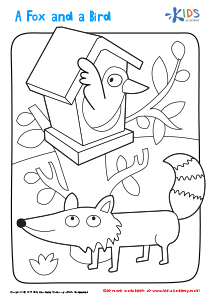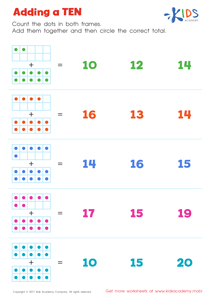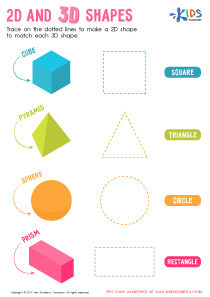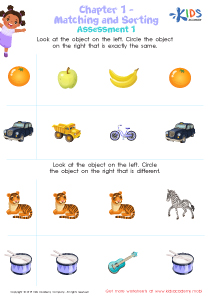Graphing Quizzes for 9-Year-Olds
2 results
2 filtered results
Clear all filters2 filtered results
-
From - To
Dive into the world of numbers and patterns with our engaging Graphing for 9-Year-Olds interactive assessment quizzes! Tailored specifically for young learners, these quizzes offer a vibrant and interactive way to check understanding and solidify knowledge on graphing concepts. Each quiz is designed to challenge and inspire, providing instant feedback to encourage learning at every step. Whether identifying types of graphs, interpreting data, or plotting points, our quizzes ensure a comprehensive grasp of graphing fundamentals in a fun, supportive environment. Unlock the potential of graphing for your child and watch their confidence and skills soar!
Graphing for 9-Year-Olds: Enhancing Learning Through Interactive Quizzes
In the realm of mathematics, the concept of graphing stands as a pivotal skill, serving as a bridge between simple numerical operations and more complex mathematical analysis. For 9-year-olds, who are at a crucial stage of their academic journey, mastering graphing can unlock new realms of understanding and application in math. It is here that interactive quizzes on graphing, tailored specifically for this age group, play an indispensable role in enhancing their learning experience.
Graphing for 9-year-olds through interactive quizzes offers a dynamic approach to learning that traditional methods may lack. These quizzes engage children in a way that textbooks and conventional homework assignments often fail to, transforming what can sometimes be perceived as a dry or challenging topic into a fun and engaging activity.
One of the primary benefits of these quizzes is the immediate feedback they provide. Unlike traditional classroom settings where students might have to wait days to know how they performed, interactive quizzes offer instant results. This instant feedback mechanism helps children identify their strengths and areas for improvement in real-time, allowing them to adjust their learning strategies promptly.
Moreover, graphing quizzes designed for 9-year-olds are developed with their cognitive and developmental stages in mind. Such quizzes often incorporate colorful graphics, relatable scenarios, and gamification elements that not only make learning more enjoyable but also enhance retention. By turning the learning process into a game, children are more likely to engage deeply with the material, spending more time practicing graphing skills without the process feeling like a chore.
Another significant advantage is the personalization aspect. Interactive quizzes can adjust their difficulty level based on the learner’s performance, providing a customized learning experience. For a 9-year-old struggling with certain graphing concepts, the quiz can offer simpler questions or repeat specific topics until mastery is achieved. Conversely, for those who show proficiency, the quizzes can present more challenging scenarios, encouraging deeper understanding and application of graphing concepts.
Furthermore, these quizzes incorporate a variety of graphing topics, from understanding axes and plotting points to interpreting data on bar graphs and pie charts. This breadth ensures that children get a well-rounded grasp of graphing, preparing them for more advanced mathematical concepts in the future. The diverse range of questions also helps in honing critical thinking and problem-solving skills, as students learn to analyze and interpret data in different graphical formats.
In addition to academic benefits, interactive graphing quizzes for 9-year-olds foster a positive attitude towards learning. By achieving success in these quizzes, children build confidence in their mathematical abilities, which can translate into a more positive outlook on education as a whole. This boost in self-esteem is crucial at this formative stage, potentially influencing their academic pursuits in the long run.
In conclusion, interactive quizzes on graphing for 9-year-olds are an invaluable tool in the educational toolkit. They not only make learning more engaging and personalized but also build foundational skills that are essential for future academic success. By embracing these innovative learning methods, we can provide our children with a strong mathematical foundation, setting them on the path to becoming confident and capable learners.











